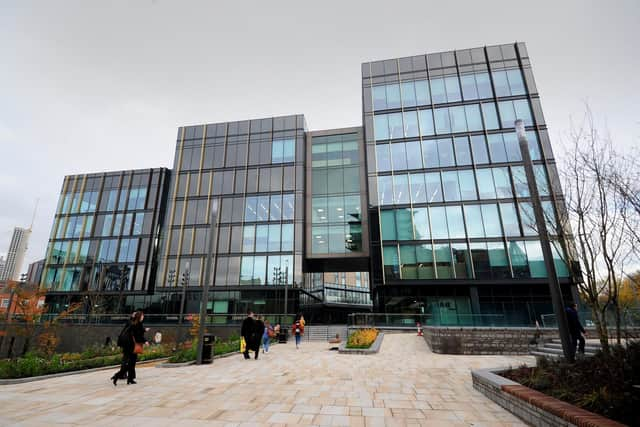Politicians need to recognise the importance of arts alongside STEM - Richard Lee
Leonardo’s quote is more than 500 years old but it has not really been heeded. In the worlds of education and funding, for example, the ‘interconnectedness of everything’ is far from being universally accepted, with ‘art’ and ‘technical’ subjects still fenced off into distinct areas. That old-fashioned view, particularly due to its funding implications, is harming students, innovation and the economy. Which is why we need to talk about STEAM (Science, Technology, Engineering, the Arts and Maths).
Here at Leeds City College’s Quarry Hill campus, the arts are a vital part of what we do, with around 1,800 students pursuing creative subjects. But I’m an engineer, I have a BSc and have spent much of my working life in the backstages of theatres. Most of my time has been spent ‘doing maths’, even though I’ve been working in the arts.
Advertisement
Hide AdAdvertisement
Hide AdWhen it comes to funding for courses, however, we still have this weird dichotomy based on divisions that really aren’t that clear-cut. At our campus we do have artists, like musicians and actors, but all around them, making it happen, are craftspeople, engineers, technicians and designers who need to be specialists in all kinds of science and maths.


And a number of subjects which have grown under the creative arts umbrella, like music production and photography, are also actually STEM (Science, Technology, Engineering and Maths) subjects. Then there are fields like computer game design that require deep and complex technical knowledge but are still classed as arts courses, because there is a reluctance to see past outdated categories.
That way of thinking is problematic because it inhibits innovation and collaboration, encouraging people to ‘stay in their lane’. It also results, far too often, in funding help not being available to anyone aged over 18 if their chosen field is deemed to fall on the ‘arts’ side of the line. That has damaging implications both for potential students - by effectively financially blocking older learners - and a performing arts industry that is screaming out for qualified theatre technicians. We need an understanding at the highest level about STEAM, and how the arts and STEM constantly overlap.
Instead, the focus tends to be all about the value of purely technical subjects. Of course we do need more engineers and scientists, but that message is often accompanied with the idea that creative courses are somehow less useful.
Advertisement
Hide AdAdvertisement
Hide AdThat’s a dangerous concept, and inaccurate: the arts industry is one of the biggest and fastest growing in the UK, and we don’t want young people to think they can’t be creative.
Where would STEM professionals be without those alternative thinkers that help provide that spark of innovation? Look at a company like Apple, which is known for pioneering new designs - it exists and flourishes because two people came together with very different, but complementary, skill sets.
Such success stories are perfect examples of STEAM in action. Our funding bodies, and politicians, would do well to learn from them when it comes to deciding which courses are worthy of financial support.
Richard Lee is assistant principal, creative arts at Leeds City College.